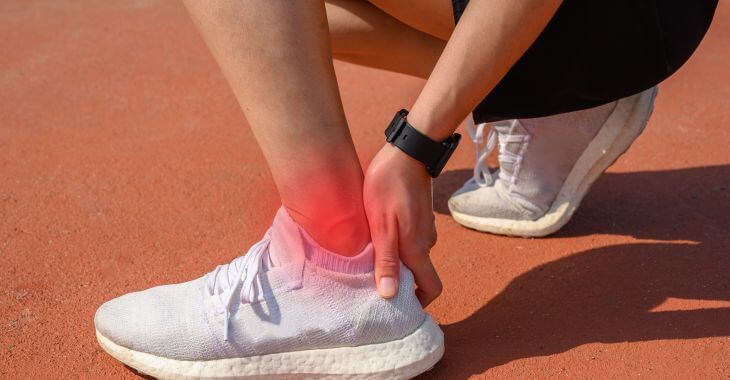How Can I Tell If I Have a Sprain vs Fracture?

Many injuries occur near joints where two or more bones come together. Knees, ankles, wrists and other joints can be broken or sprained from twisting or impact. When you have a painful, injured joint, it is important to know how to tell a sprain from a break. Here are the differences between a sprain vs fracture to determine the best type of treatment.
Joints in the body connect two or more bones and allow the bones to move in different directions. Ligaments are the soft tissues that connect the ends of the bones but stretch enough to allow them to move. When an injury occurs that involves a joint, the bones can shift beyond the normal range of motion, stretching the ligaments. Twisting or impact to a forearm, shin, ankle, thigh or knee can cause stress on both the bones and ligaments. If only the ligaments are damaged, you may have a sprain vs a fracture.
What Is a Sprain?
A sprained ankle, wrist or knee means the ligaments in the joint were damaged. This is a common injury that occurs in vehicle wrecks, sports injuries and falls. Sprains can be mild to severe, depending on the extent of damage to the ligaments. A mild to moderate sprain is due to stretching and tear of the ligaments. A severe sprain involves a torn ligament that may be completely torn in half or disconnected from the bone.
A joint sprain is painful and at first glance, you may not know whether it’s a sprain vs fracture. Both can have similar symptoms, especially if it is a severe sprain. Some of the symptoms you may experience when you sprain your knee, ankle or wrist include:
- Throbbing or sharp pain around the joint
- Swelling around the joint
- Stiffness in the joint
- Bruising
- Increased pain when putting pressure on the joint
Sprained joints tend to hurt more within 24 hours than when the injury first occurs. However, with rest, ice and elevation, a mild to moderate sprain will begin to feel better in a few days and it can heal over a week or two. This is different than a broken bone, which has more intense symptoms initially that can alert you to a fracture versus a sprain.
Symptoms of a Fractured Joint
Most fractures or broken bones occur with impact injuries or intense pressure on the joint. When you twist your ankle or knee, it is more likely to result in a sprain vs fracture. However, if the joint is twisted with an impact or velocity, a fracture can occur to one of the bones connected in the joint. Symptoms of a fractured joint include the same symptoms as a sprain, but also include:
- Intense pain at time of injury
- Inability to put weight or pressure on the joint
- The joint looks disfigured
- Dark bruising and discoloration
The main difference between a sprain vs fracture is the intensity of pain and whether you can use the joint at all. The best way to tell a sprain from a break is to try and use the joint. If you try to walk on a broken knee or ankle, it is not possible. While it may be painful with a sprain, you can usually put some weight on the leg and limp.
Treatment for a Sprain vs Fracture
As stated earlier, sprains can often heal on their own if they are not severe. A sprained wrist, ankle or knee has a torn or stretched ligament that needs to rest and heal over several days or more. Treatment for mild to moderate sprains can include rest, ice and elevation. A brace or wrap may be used to provide compression and stability to the joint while it heals. Severe sprains may require surgery if the ligament was completely torn, and some patients may need physical therapy or rehabilitation after any sprain.
Fractures can heal on their own, but they may not heal correctly or in alignment. It is vital that broken bones are x-rayed and receive medical treatment. Simple fractures can be allowed to heal with the help of a brace, cast or boot that stabilizes the joint. More complex fractures may need to be reduced or reset to align the bones, or surgery may be required to repair the bone.

How to tell a sprain from a break is not always easy, which is why you should see a doctor when you have any significant joint injury. You do not want to delay getting treatment, as it could impact the future mobility of your joint. If you have a swollen, bruised or painful joint injury, call your doctor or head to an urgent medical care center to determine whether it is a sprain or fracture.
The information provided on this website, including text, graphics, images, and other materials, is intended solely for informational purposes and should not be used as a substitute for professional medical advice, diagnosis, or treatment.



)